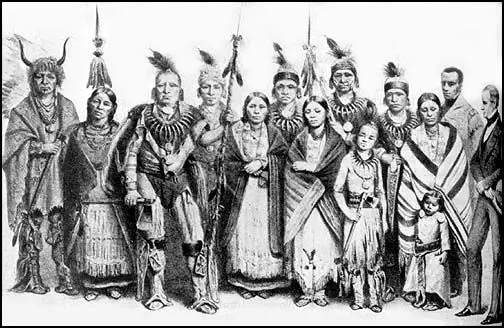Rolling on the Rez: Michigan’s Native American Transportation Story
Rolling on the Rez: Michigan’s Native American Transportation Story

Imagine yourself in Michigan’s breathtaking landscape, centuries ago. The air is crisp, the forest dense, and the Great Lakes shimmer in the distance. You’re not driving a car, though. You’re walking, paddling, or maybe even riding a horse. This was the reality for Michigan’s Native American communities for generations, their transportation methods intimately tied to the land and their way of life.
This article dives into the fascinating world of Native American transportation in Michigan, exploring the ingenuity and adaptability of these communities in navigating their environment. We’ll journey through time, uncovering the tools, techniques, and stories that shaped their transportation history.
Related Articles: Rolling on the Rez: Michigan’s Native American Transportation Story
- Unveiling the Secrets of the Caddo: A Journey into the Heart of Texas Native American Culture
- Discover the Enduring Legacy of Indian Culture: Exploring Traditions, Arts, and Identity
- Discover the Native American Heritage of Pagosa Springs
- Cashing In: The Richest Indian Reservation In America
- Discover the Enriching World of Native American Tribes in Texas
Walking the Path: The Foundation of Movement
For centuries, walking was the most common form of transportation for Native Americans in Michigan. It wasn’t just a way to get from point A to point B, it was a way of life. Walking allowed them to intimately connect with their environment, observing the subtle changes in the land, the movements of animals, and the rhythms of nature.
The terrain of Michigan, with its forests, rivers, and lakes, demanded a particular skill set. Native Americans developed specialized footwear, like moccasins, designed for durability and comfort. They also mastered the art of navigating by the stars, using landmarks and natural features to guide their way.
Paddling the Waters: The Grace of the Canoe
The Great Lakes and the vast network of rivers and streams that crisscross Michigan were vital arteries for Native American communities. The canoe, a marvel of engineering and craftsmanship, became their primary waterborne vessel.
These canoes, often crafted from birch bark or cedar, were lightweight, maneuverable, and incredibly durable. They were built to navigate the turbulent waters of the Great Lakes and the meandering currents of rivers. The canoe wasn’t just a means of transportation; it was a symbol of community, a platform for trade, and a source of sustenance.
Riding the Wind: The Strength of the Sail
While the canoe was the workhorse of water transportation, some Native American communities in Michigan, particularly those along the shores of Lake Michigan, also embraced the power of the sail. Using animal hides or woven reeds, they created sails that harnessed the wind, allowing them to travel greater distances and explore new territories.

These sailing techniques were not just about efficiency; they were about pushing boundaries, venturing beyond familiar waters, and forging connections with other communities. The sail, a symbol of innovation and ambition, represented the spirit of exploration that characterized Native American life in Michigan.
The Horse: A New Chapter in Transportation
The arrival of the horse in the 17th century marked a significant turning point in Native American transportation. Initially introduced by European traders, the horse quickly became an integral part of their lives. The horse provided a faster and more efficient means of travel, allowing them to cover greater distances, hunt more effectively, and participate in trade networks more easily.
The horse also brought about cultural changes. Native American communities adopted new hunting techniques, developed specialized horse-riding skills, and adapted their social structures to incorporate the horse into their lives. The horse became a symbol of power, prestige, and mobility, transforming the landscape of Native American life in Michigan.
Beyond Transportation: The Legacy of Ingenuity

The story of Native American transportation in Michigan is not just about the methods they used; it’s about the ingenuity, resilience, and adaptability that shaped their lives. They were masters of their environment, using their knowledge and skills to navigate the land and water, adapting to changing conditions, and forging a unique connection with their surroundings.
Their transportation methods were not just practical tools; they were extensions of their culture, their beliefs, and their way of life. The canoe, the horse, the moccasin, and the sail were more than just objects; they were symbols of their identity, their spirit, and their enduring connection to the land.
The Enduring Legacy
Today, the legacy of Native American transportation in Michigan lives on in the stories, the artifacts, and the traditions of the communities who have called this land home for centuries. It reminds us of the importance of understanding our past, respecting the ingenuity of our ancestors, and recognizing the profound connection between people and their environment.
FAQs about Native American Transportation in Michigan

1. What were the primary modes of transportation used by Native Americans in Michigan?
The primary modes of transportation included walking, canoeing, and horseback riding.
2. How did the arrival of the horse impact Native American life in Michigan?
The horse significantly impacted Native American life, providing a faster and more efficient means of travel, influencing hunting techniques, and changing social structures.
3. What were some of the challenges faced by Native Americans in navigating the terrain of Michigan?
Challenges included navigating dense forests, crossing rivers and lakes, and adapting to changing weather conditions.
4. How did Native Americans navigate their way without modern technology?
They relied on their knowledge of the stars, landmarks, and natural features to guide their way.
5. What is the significance of Native American transportation methods beyond their practical use?
Native American transportation methods were deeply connected to their culture, beliefs, and way of life, serving as symbols of their identity and connection to the land.

Closure
Thus, we hope this article has provided valuable insights into Rolling on the Rez: Michigan’s Native American Transportation Story. We hope you find this article informative and beneficial. See you in our next article!